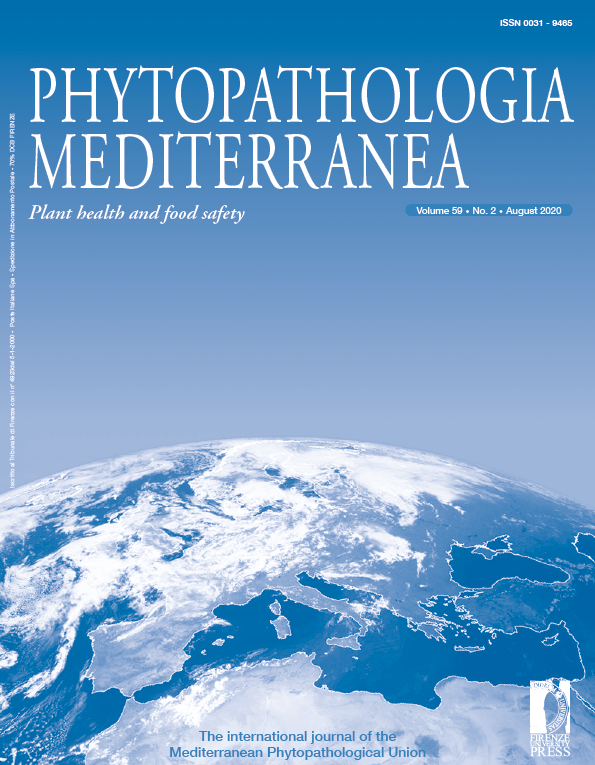Interactions between lime witches’ broom phytoplasma and selected phytoplasma strains of 16SrI, 16SrII, and 16SrIX groups in periwinkle
Published 2020-07-17
Keywords
- Mixed infections,
- symptomatology,
- quantitative PCR
How to Cite
Abstract
The interactions of lime witches’ broom (LWBP, 16SrII-B) with alfalfa witches’ broom (AWBP, 16SrII-C), tomato witches’ broom (TWBP, 16SrII-D), sesame phyllody (SPhP, 16SRIX-C) and rapeseed phyllody (RPhP, 16SrI-B) phytoplasmas were studied in periwinkle plants. Periwinkle plants were graft inoculated either with each phytoplasma alone or with LWBP and a second phytoplasma. The latter was inoculated either below or above the site of LWBP inoculation, and either simultaneously or non-simultaneously. In all treatments and all replications, plants doubly inoculated with LWBP+SPhP or LWBP+AWBP showed significantly milder symptoms and lived longer than those singly inoculated with LWBP, SPhP, or AWBP. In plants with mixed infection by LWBP+RPhP or LWBP+TWBP, characteristic symptoms of contributing strains were seen regardless of relative inoculation order and inoculation site. Analysis of the data obtained by quantitative PCR showed that the mean concentration of LWBP in all doubly inoculated plants was significantly lower than in plants inoculated with LWBP alone. Among four phytoplasmas, SPhP was more effective in decreasing the concentration of LWBP, followed in order by AWBP, TWBP, and RPhP. Also, in mixed infections, more decrease in LWBP concentration was found in non-simultaneous inoculations and when the second phytoplasma was inoculated below the site of LWBP inoculation. Based on analyses of the symptoms and quantitative PCR data, it seems that interactions of LWBP+SPhP and LWBP+AWBP are of high mutual antagonism while those of LWBP+RPhP and LWBP+TWBP phytoplasmas are less-antagonistic. Significance of these findings is discussed.






